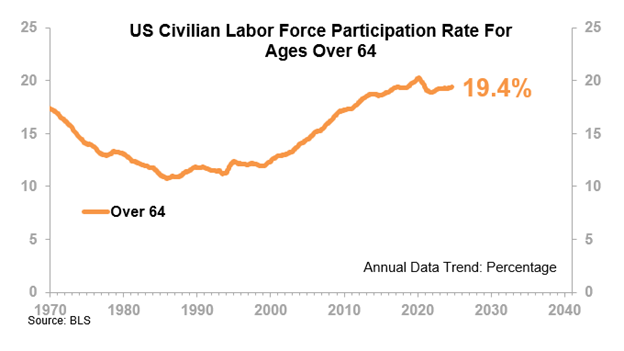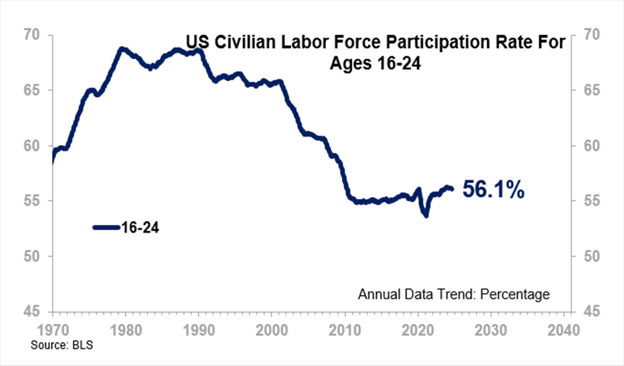The US Civilian Labor Force Over-16 Participation Rate, a measure of the percentage of the population over age 16 that is either working or looking for work, is nearing pre-pandemic levels. The 12MMA, at 62.6% as of August, is about a half percentage point shy of the February 2020 level.
A look at specific age demographics reveals that most are engaged in the labor force to an equal or greater extent than before the pandemic:
- Ages 16-24 have exceeded the pre-pandemic level in recent months, but the trend is weak.
- Ages 25-34 are participating in the labor market at rates exceeding the pre-pandemic level.
- Ages 35-44 are more than a percentage point above the pre-pandemic level and are carrying the bulk of the improvement in total participation rates on their backs.
- Ages 45-54 are participating at a higher rate than pre-pandemic.
- Ages 55-64 are exceeding pre-pandemic levels.
The only adult age group participating in the work force to a lesser degree than pre-pandemic is the over-64 group, which is participating at a rate 0.8 percentage points lower than just before the pandemic.

Participation among the over-64s had been in a long-term rising trend since about the late 1990s as workers began pushing past what had become typical retirement age. The participation rate for over-64s reached a peak of 20.2% in February 2020, just before the pandemic hit the US in earnest.
Another notable trend is visible in the 16-24 demographic, which has exhibited a trajectory that somewhat opposes that of the over-64s: while the over-64s generally ramped up their labor force participation during the 2000s, the 16-24s wound theirs down.

The post-COVID diminished participation among the over 64s – essentially, the baby boomer generation – is likely a contributing factor to the tight labor market. As the baby boomers comprise such a large generation relative to the others, their exit from the workforce is being felt. The decline of the 16-24s’ participation through the first decade of the 2000s is also exacerbating the labor market tightness. Lack of participation seems to be more keenly felt in the areas of the trades or general manual labor. These could be difficult positions to fill over the next 10 years.
Ensure you are utilizing your more experienced and knowledgeable workers to train up your younger employees. When their knowledge exits, it will not be easy to replace.